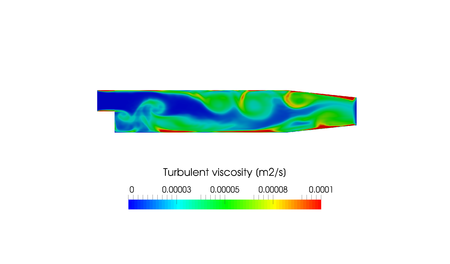Difference between revisions of "Turbulence modeling by Bahram Haddadi"
Jump to navigation
Jump to search
Jozsef Nagy (talk | contribs) |
Jozsef Nagy (talk | contribs) |
||
| Line 5: | Line 5: | ||
* '''affiliation''': Institute of Chemical, Environmental and Bioscience Engineering, TU Wien, Austira | * '''affiliation''': Institute of Chemical, Environmental and Bioscience Engineering, TU Wien, Austira | ||
* '''contact''': <mail address='bahram.haddadi.sisakht@tuwien.ac.at' description='author'>click here for email address</mail> | * '''contact''': <mail address='bahram.haddadi.sisakht@tuwien.ac.at' description='author'>click here for email address</mail> | ||
| − | * '''OpenFOAM version''': OpenFOAM | + | * '''OpenFOAM version''': OpenFOAM 7.0 and v1906 |
* '''Published under''': CC BY-NC-SA license ([https://creativecommons.org/licenses creative commons licenses]) | * '''Published under''': CC BY-NC-SA license ([https://creativecommons.org/licenses creative commons licenses]) | ||
* '''Editorial board''': Bahram Haddadi, Christian Jordan, Michael Harasek | * '''Editorial board''': Bahram Haddadi, Christian Jordan, Michael Harasek | ||
| − | =[ | + | =[https://www.cfd.at/downloads/FoamTutorial_6-ExampleSix.pdf Turbulence – Transient]= |
'''Explanation''': Use the pisoFoam solver, run a backward facing step case for 0.2 s with different turbulence models: Smagorinsky (LES), kEqn (LES) and kEpsilon (RAS). | '''Explanation''': Use the pisoFoam solver, run a backward facing step case for 0.2 s with different turbulence models: Smagorinsky (LES), kEqn (LES) and kEpsilon (RAS). | ||
| Line 21: | Line 21: | ||
* Finding appropriate turbulence model | * Finding appropriate turbulence model | ||
| − | Download pdf [ | + | Download pdf [https://www.cfd.at/downloads/FoamTutorial_6-ExampleSix.pdf here]. |
Picture: Bahram Haddadi, TU Wien | Picture: Bahram Haddadi, TU Wien | ||
Revision as of 03:48, 1 October 2019
- contributor: Bahram Haddadi, Clemens Gößnitzer, Jozsef Nagy, Vikram Natarajan, Sylvia Zibuschka, Yitong Chen
- affiliation: Institute of Chemical, Environmental and Bioscience Engineering, TU Wien, Austira
- contact: click here for email address
- OpenFOAM version: OpenFOAM 7.0 and v1906
- Published under: CC BY-NC-SA license (creative commons licenses)
- Editorial board: Bahram Haddadi, Christian Jordan, Michael Harasek
Turbulence – Transient
Explanation: Use the pisoFoam solver, run a backward facing step case for 0.2 s with different turbulence models: Smagorinsky (LES), kEqn (LES) and kEpsilon (RAS).
Objectives:
- Understanding turbulence models
- Understanding the difference between transient and steady state simulation
- Finding appropriate turbulence model
Download pdf here.
Picture: Bahram Haddadi, TU Wien
